Revenge of an electric car: the beginning of the 21st century
Of the 900 million cars worldwide, only a small fraction operate on electric motors. By 2013, the number of electric vehicles in the United States was one hundred seventy thousand, and about a thousand electric vehicles were officially registered in Moscow.
The situation is gradually changing due to increased attention to the environment since 1960-1970s and rising oil and gas prices.
Under the cut - about what happened in the electric vehicle industry in the first decade of the 21st century.
The whole series of articles:
Dawn of electric vehicles: XIX century.
Dawn and sunset of electric vehicles: the first half of the XX century.
Electric car strikes back: the second half of the XX century.
Revenge of an electric car: the beginning of the XXI century.
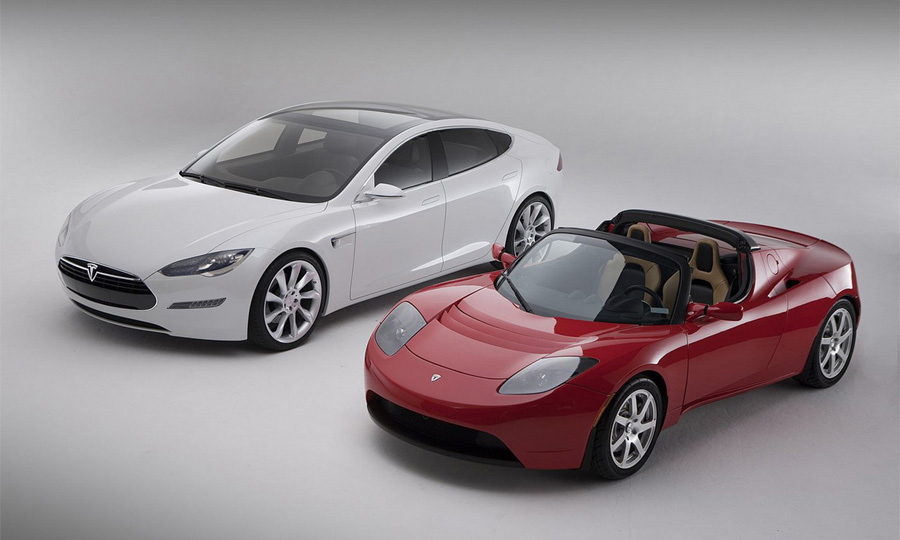
The 21st century for electric vehicles has begun poorly. In 1997, General Motors introduced the EV-1. The electric car was available in California and Arizona for leasing. A total of 1,117 electric vehicles were sold.
In 2003, all electric cars were destroyed, only two remained as museum exhibits.
On a single charge of a lead-acid battery, the EV-1 electric car could travel up to 120 kilometers, and nickel-metal hydride - up to 240 kilometers. The speed of the car was forcibly limited to 129 km / h, acceleration to 96 km / h took 9 seconds. It was possible to charge the car in 12 hours from an ordinary American standard outlet using a special device.
Fuel prices influenced Americans' reluctance to buy electric cars: in 1999, the cost of a gallon of gasoline, about 3.79 liters, was $ 1.44. In 2003, a gallon cost $ 1.75.

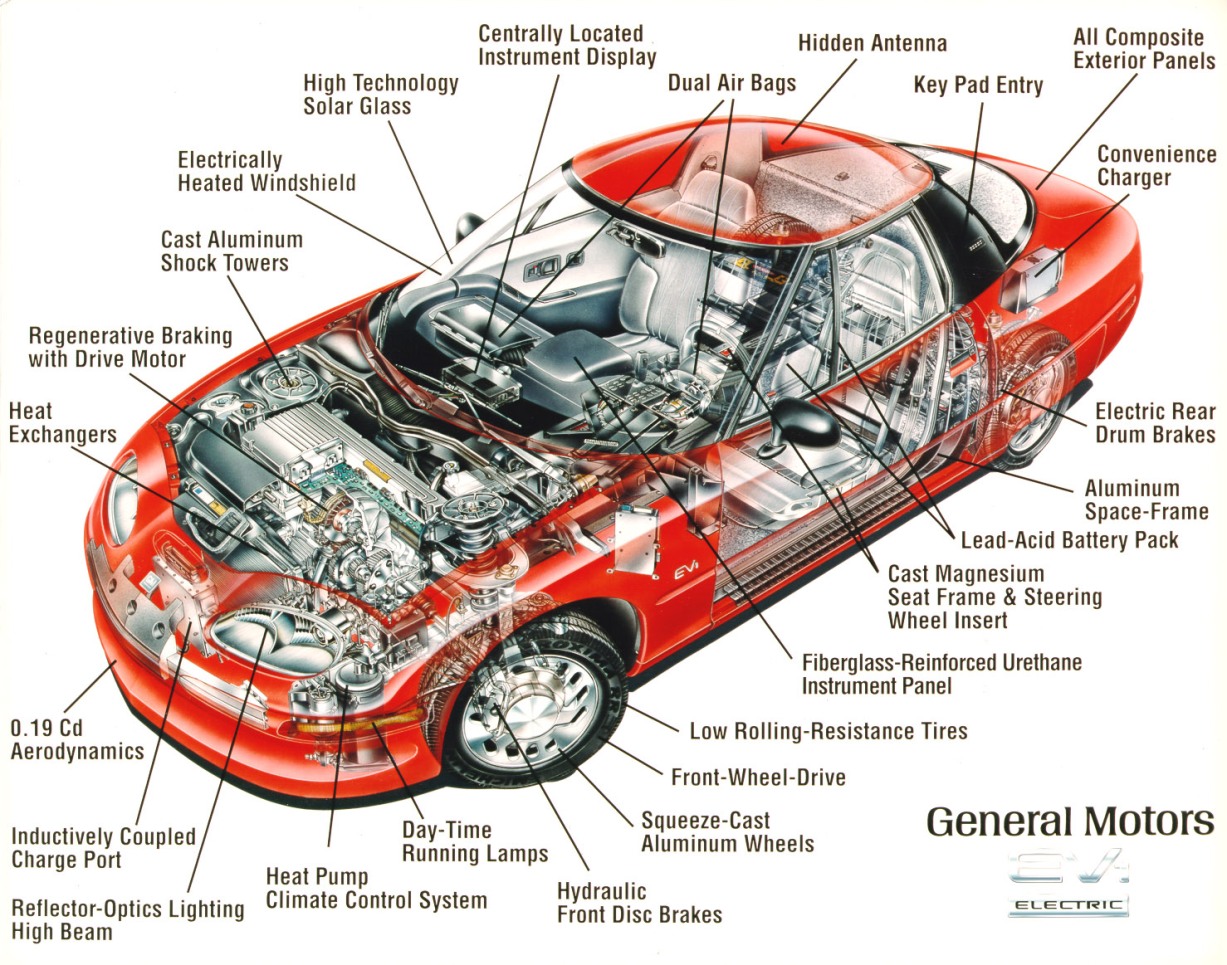

Cemetery of electric vehicles EV-1.

Ian Wright is a co-founder of Tesla, which together with Martin Eberhard in 2003 presented Tesla to Ilona Mask and attracted an entrepreneur to the side of the company. A year after the founding of the company, Wright left because he did not believe in the commercial success of the enterprise. In 2005, Wright founded the Wrightspeed company and introduced the prototype electric car Wrightspeed X1, which did not go into series.
X1 could accelerate to 96 kilometers per hour in 2.9 seconds, the maximum speed of an electric car is 167 kilometers per hour, the range in urban conditions is 160 kilometers.
The main activity of the company is the development, manufacture of electric motors and their installation on cars - trucks, garbage trucks and other vehicles. Wrightspeed Servicesuse the postal services UPS and DHL. According to the entrepreneur, the electric motor in the truck pays off in four years.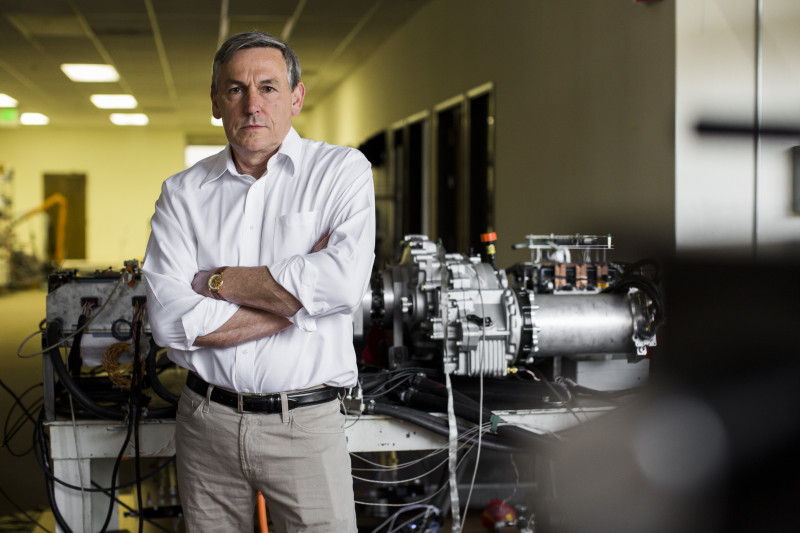
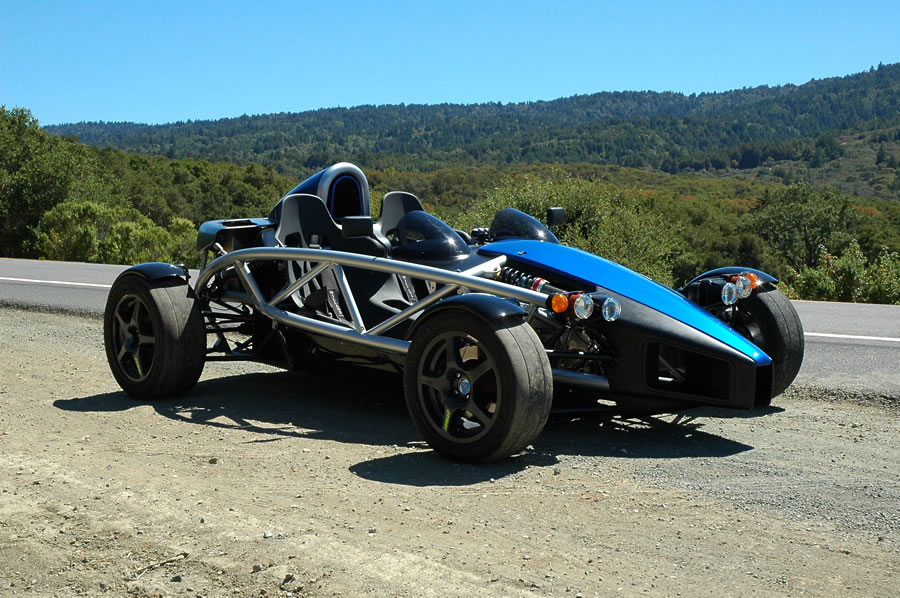

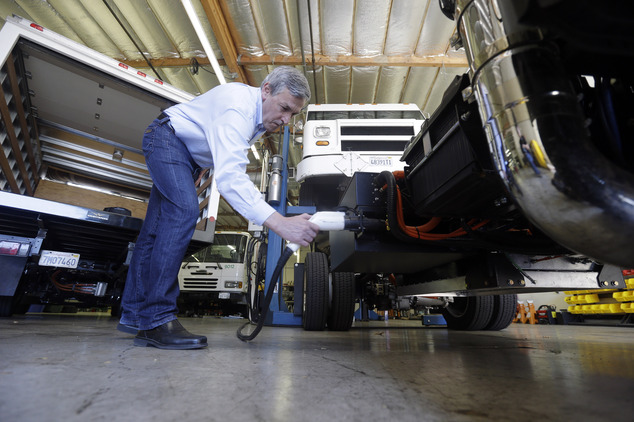
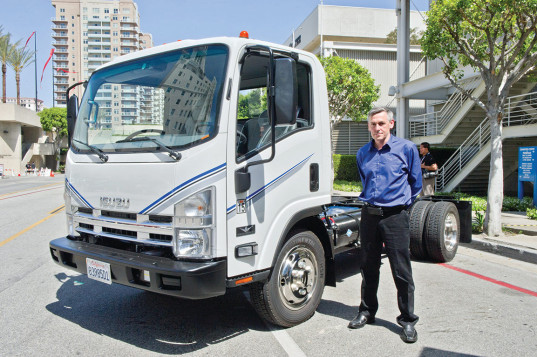
In July 2006, in Santa Monica, California, Tesla revealed the Roadster. The company began mass production of electric cars in 2008, but buyers received the first copies a few months later.
The Roadster accelerates to 100 km / h in 4 seconds, and its maximum speed was forcibly limited to 201.1 km / h. Engine power - 288 horsepower. The mass of the electric car is about 1140 kilograms. Mileage on a single charge is from 300 to 400 kilometers. Batteries charge in three and a half hours.
In 2014, the electric car was updated, increasing the battery capacity to 70 kW * h. Mileage on a single charge of the new version is about 644 kilometers.
The design for the Tesla Roadster was developed by the English car manufacturer Lotus Cars.
Read more about the development of Tesla in the Tesla Unknown Story series of articles .
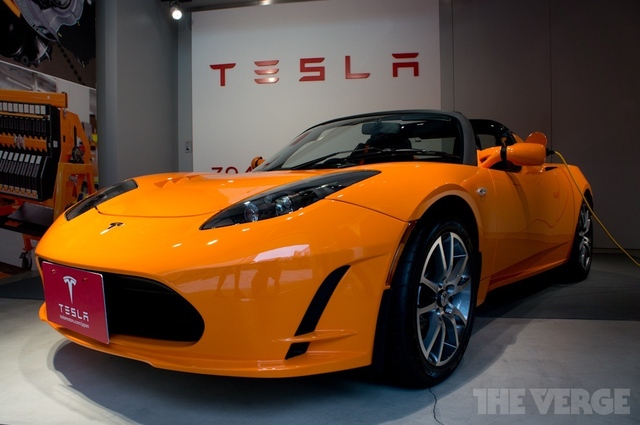

At the North American Auto Show in Detroit, General Motors introduced the Chevrolet Volt, a hybrid car, in January 2007. 45 liters of fuel and fully charged lithium-ion batteries last for 1,000 kilometers. The hybrid is charged from a network with a capacity of 110 volts for six hours and in three hours from a network of 240 volts. The maximum speed is 161 kilometers per hour.
At Volt, General Motors used EV-1 electric vehicle technology.
Serial production and sales of Volt began in 2010.


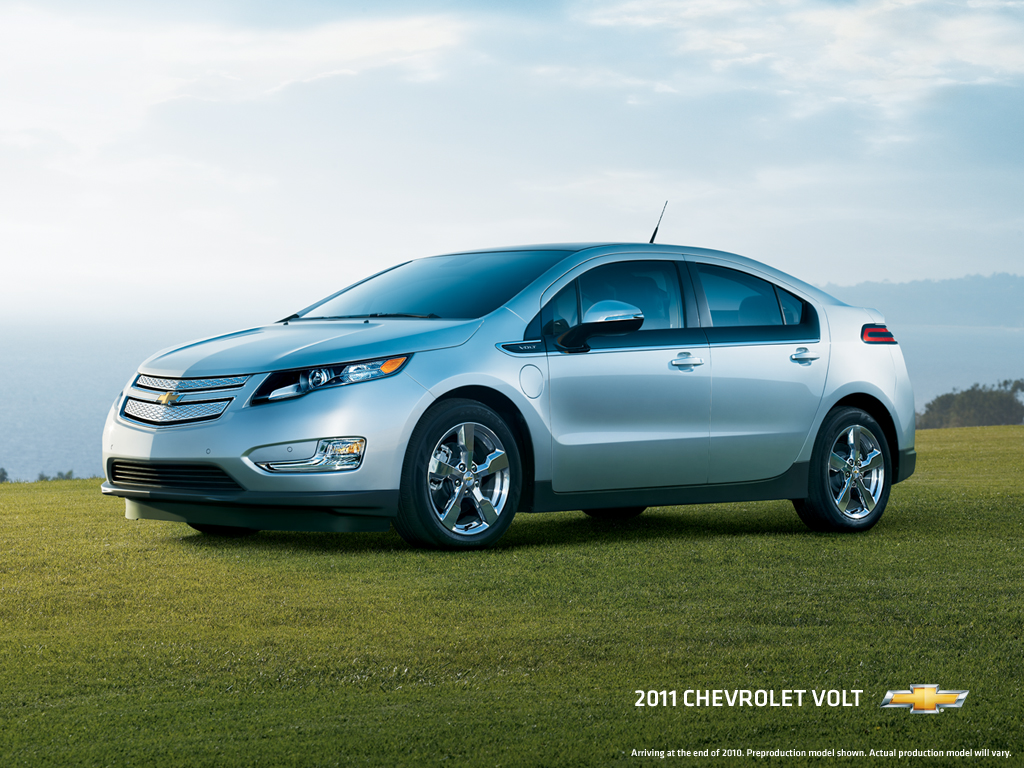
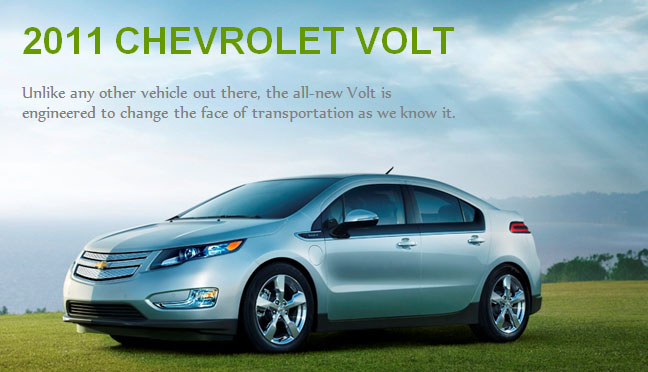
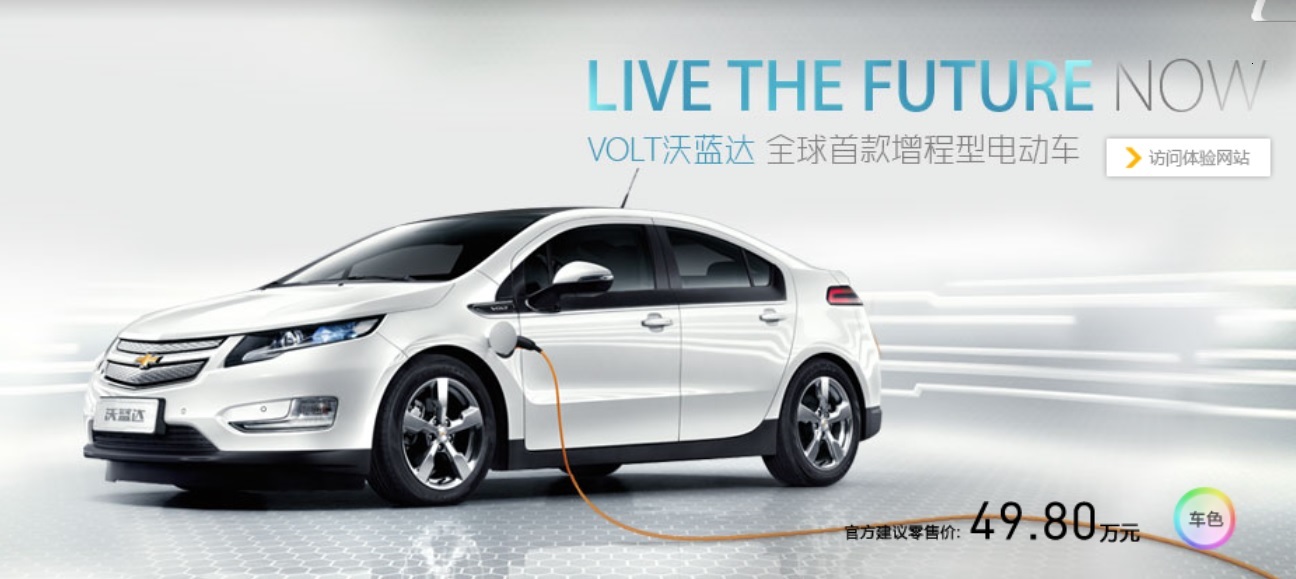
Renault-Nissan showed off a five-door electric hatchback Nissan Leaf at the 2009 Tokyo Motor Show. On April 1, 2010, acceptance of orders for an electric car began, and in December of that year, sales began in the United States, and in early 2011, in Europe.
In 2010, Leaf received the title of European Car of the Year 2011 and World Car of the Year 2011.
Leaf is built on the Nissan V platform, like the Juke crossover and Micra compact car. Leaf electric motor power is 108 horsepower, and mileage from a single charge is about 160 kilometers. The mass of the lithium-ion battery is 270 kilograms; it is assembled from 192 cells. The battery contains lithium manganate on the positive electrode and graphite on the negative.
The battery is fully charged from a household electrical network of 220 volts and a current of 30 amperes in 8 hours. A special Nissan charger with a voltage of 480 volts and a current of 125 amperes charges the battery by 80% in half an hour.
Used batteries from an electric car will get a second life in household batteries, in this project Nissan competes with Tesla and Mercedes .
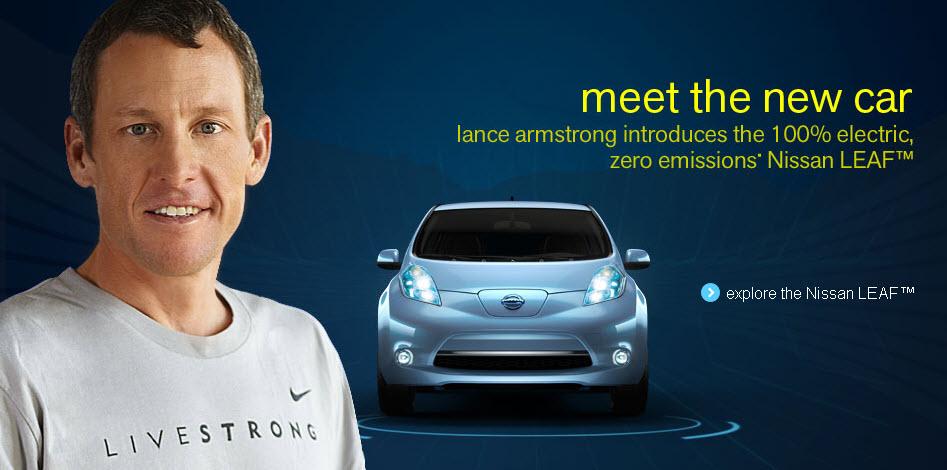
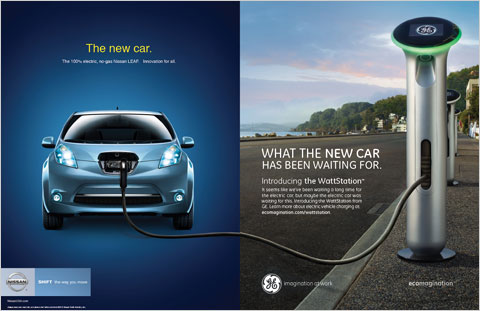
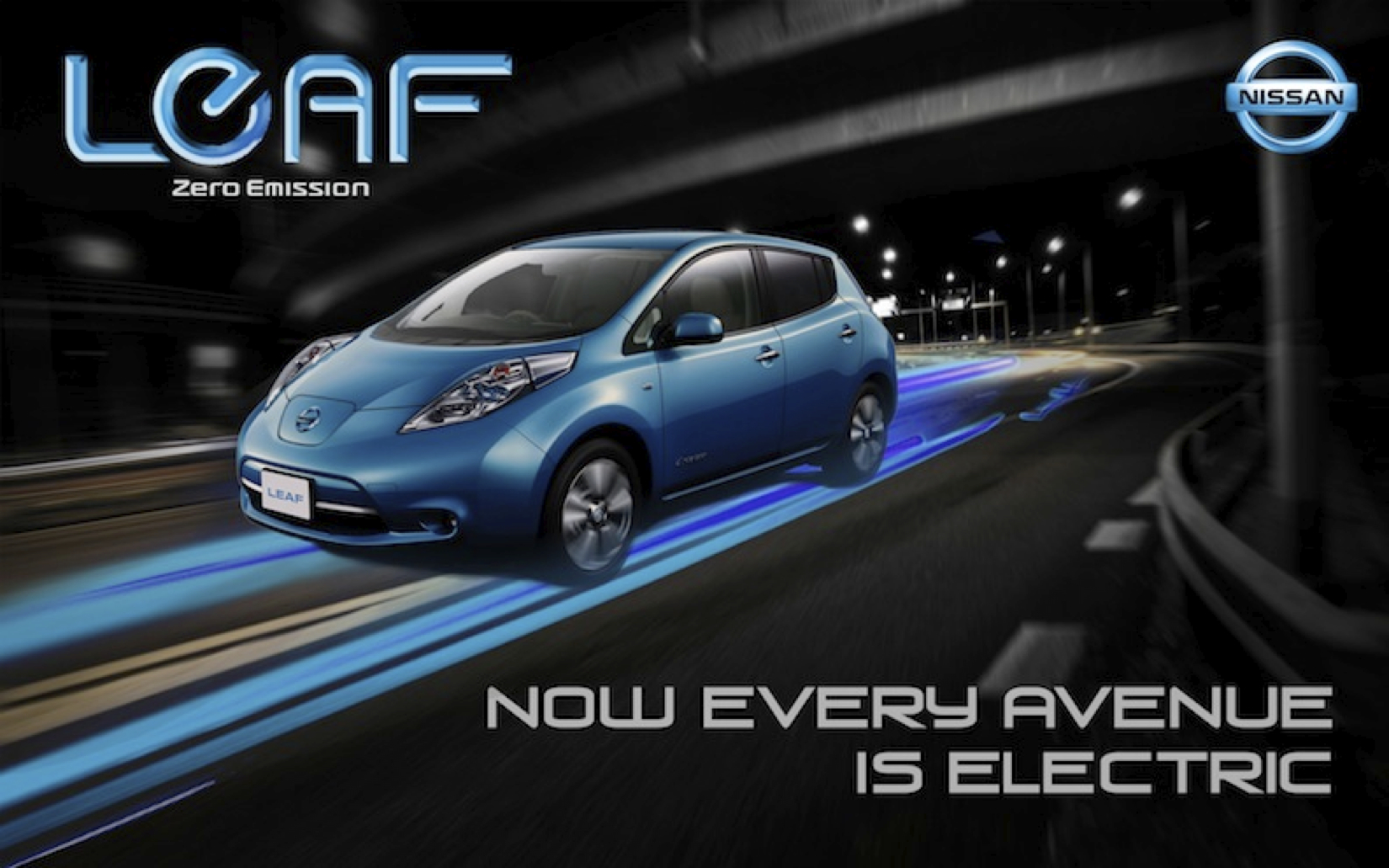
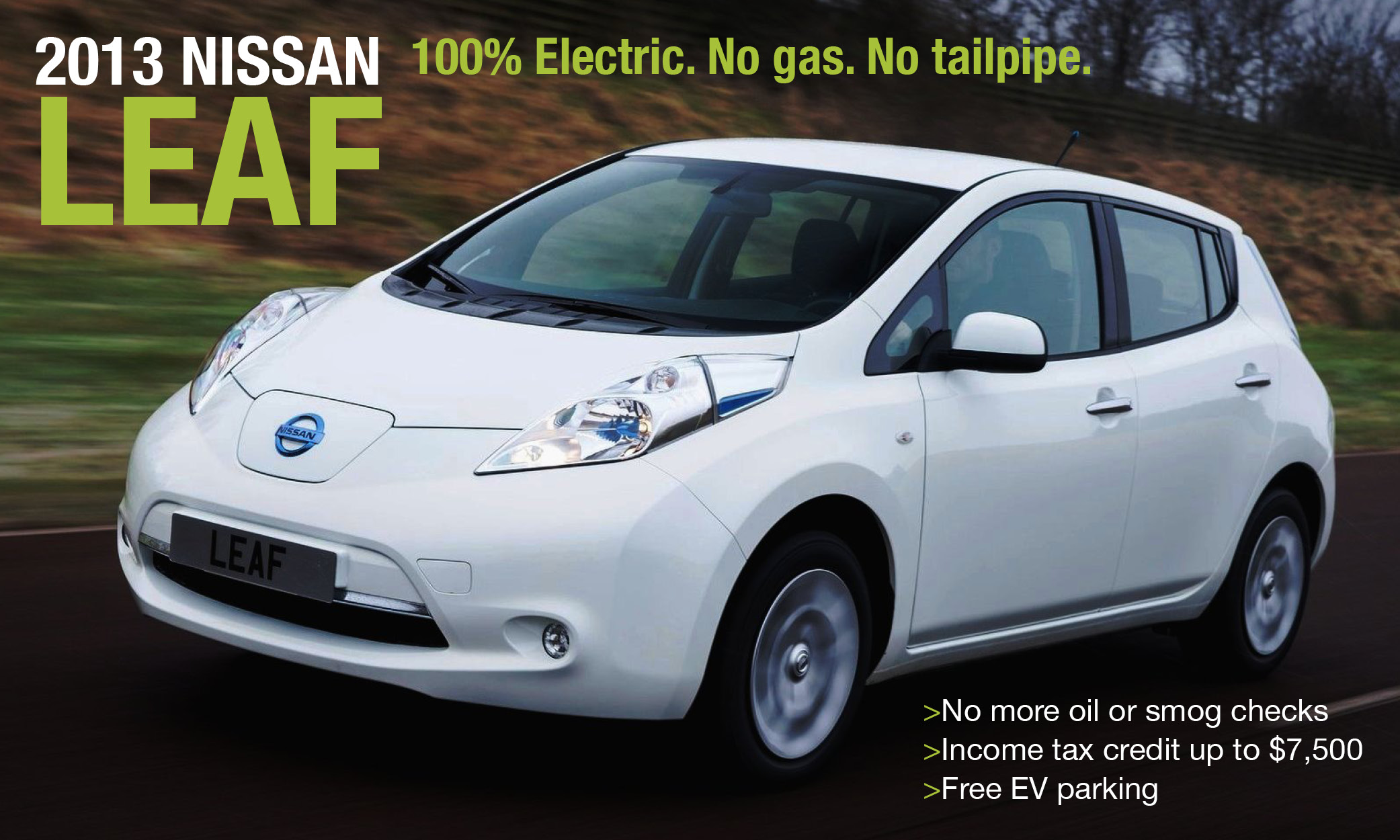
Renault at the 2009 Frankfurt Motor Show introduced the Renault Fluence ZE sedan ... The name stands for Zero Emission. This sedan is an electric motor version of the Renault Fluence gasoline. A lithium-ion battery with a capacity of 22 kWh allows you to drive 185 kilometers on a single charge at a speed of up to 135 kilometers per hour.
From 2011 to 2014, the company sold four thousand electric vehicles of this model.
There are three ways to charge the Renault Fluence ZE battery: in 10-12 hours from a standard outlet - 220 volts and 10 amperes, in 6-9 hours - from a street charging station with a capacity of 3 kW and a current of 16 amperes, and using “QuickDrop” - replacing the battery with a charged one at special stations.
The video shows how to replace the “QuickDrop” station. Tesla introduced such a system in the summer of 2013, opened the station in December 2014, but in June 2014, Elon Musk said that replacing the batteries in the Tesla Model S is not popular.
Renault Fluence ZE ad
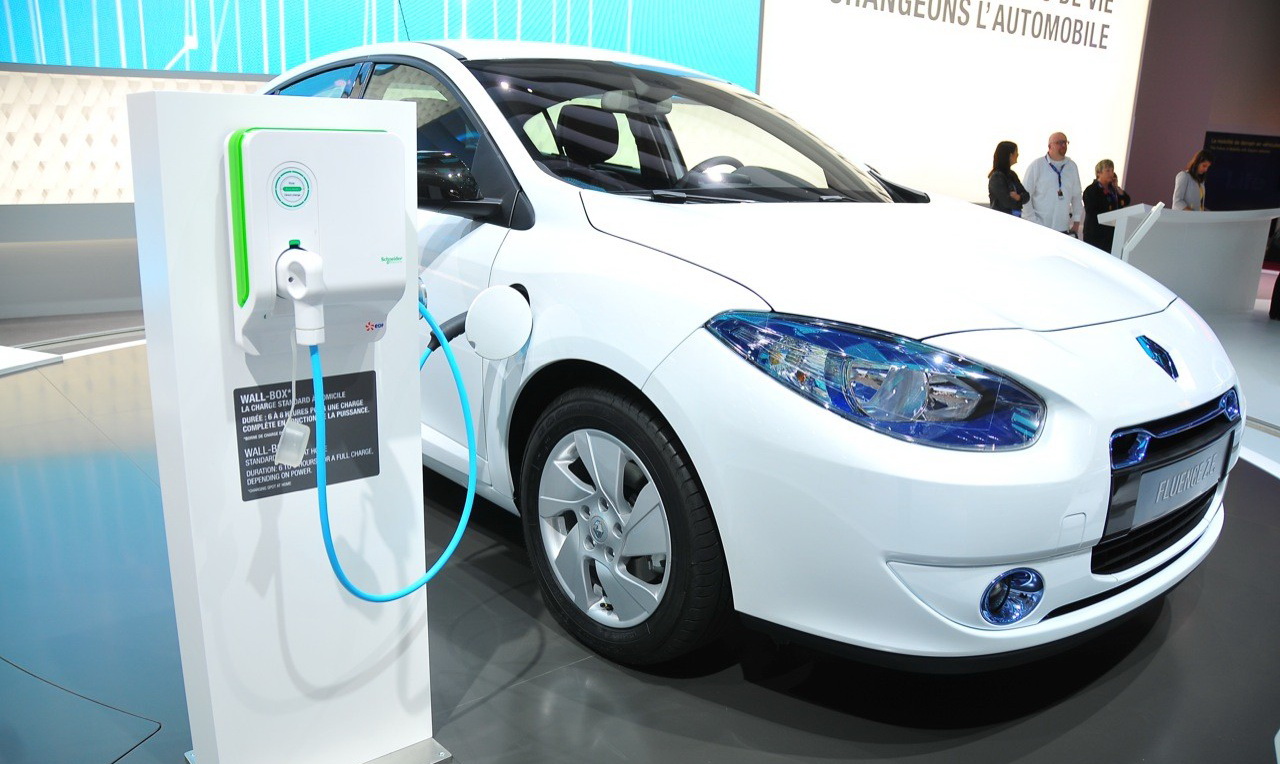
Mitsubishi began selling its innovative i-Miev electric car in Japan in July 2009, and began public sales on April 1, 2010. In December 2010, i-Miev reached the European market.
I-Miev is a five-door hatchback manufactured by Mitsubishi Motors, a version of the petrol Mitsubishi i converted into an electric car. The electric version is 200 kilograms heavier than the original, its mass is 1100 kilograms. A lithium-ion battery and an electric motor with a capacity of 63 horsepower allow the electric car to accelerate to 130 kilometers per hour. The power reserve of the electric vehicle is 150 kilometers.
In various countries, electric cars are sold under the names Peugeot iOn, Citroën C-Zero, Mitsuoka Like, Subaru O2.
By December 2012, around 22,000 copies were sold worldwide. In 2013, 211 i-Miev units were sold in Russia. Now the price for this model is from 999 thousand rubles.
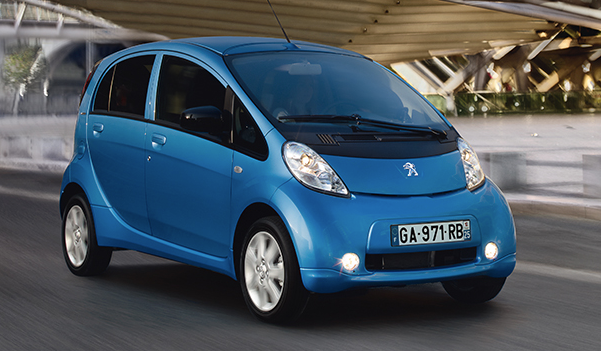
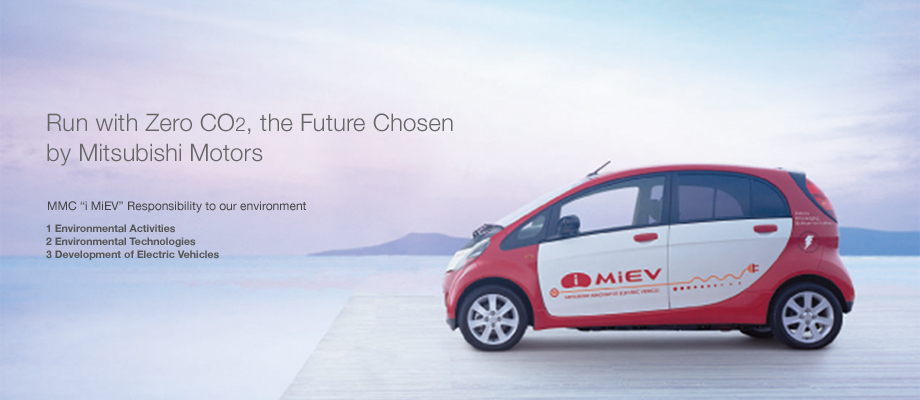
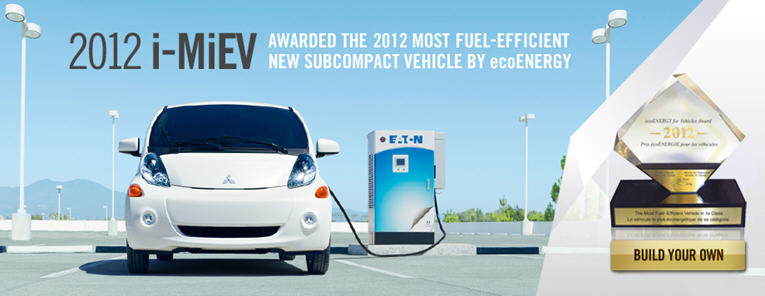
In March 2009, Tesla Motors introduced the Model S at the Frankfurt Motor Show, and sales began in 2012. The electric car received the highest rating when passing crash tests in Europe, and in 2013 broke the equipment for tests.
By the end of the first quarter of 2014, about 32 thousand Tesla S cars were sold. Elon Musk plans to sell 55 thousand electric cars in 2015.
The first test drive of an electric car.
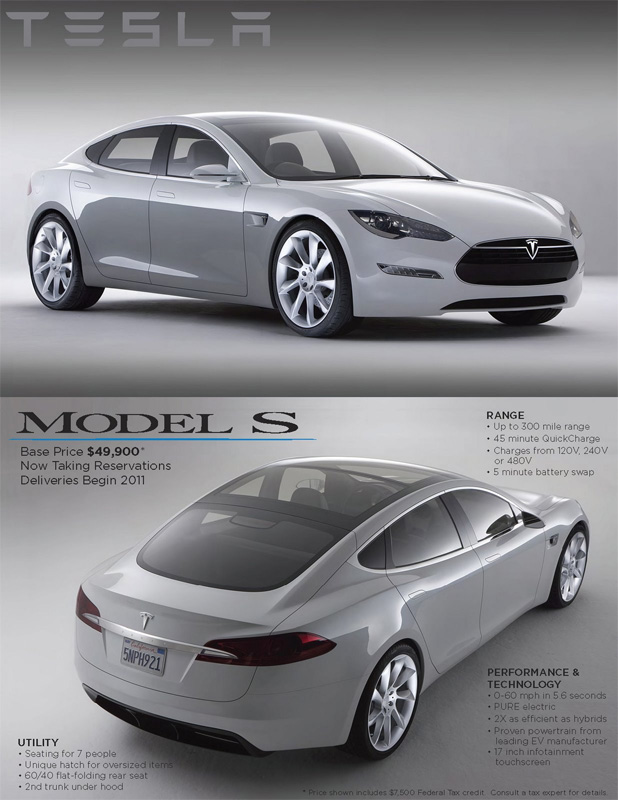

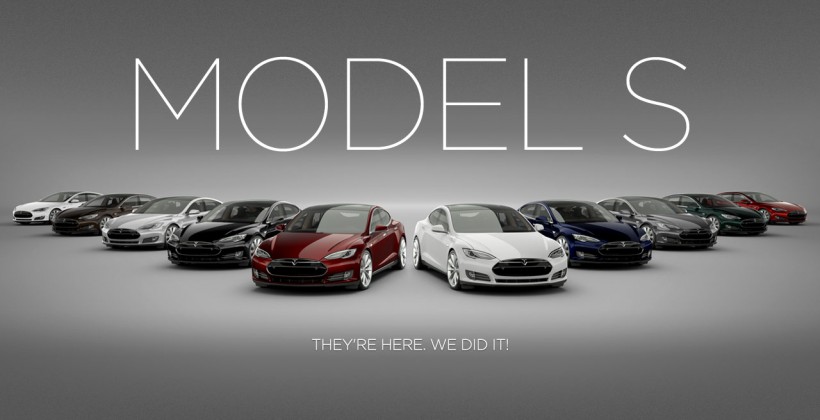
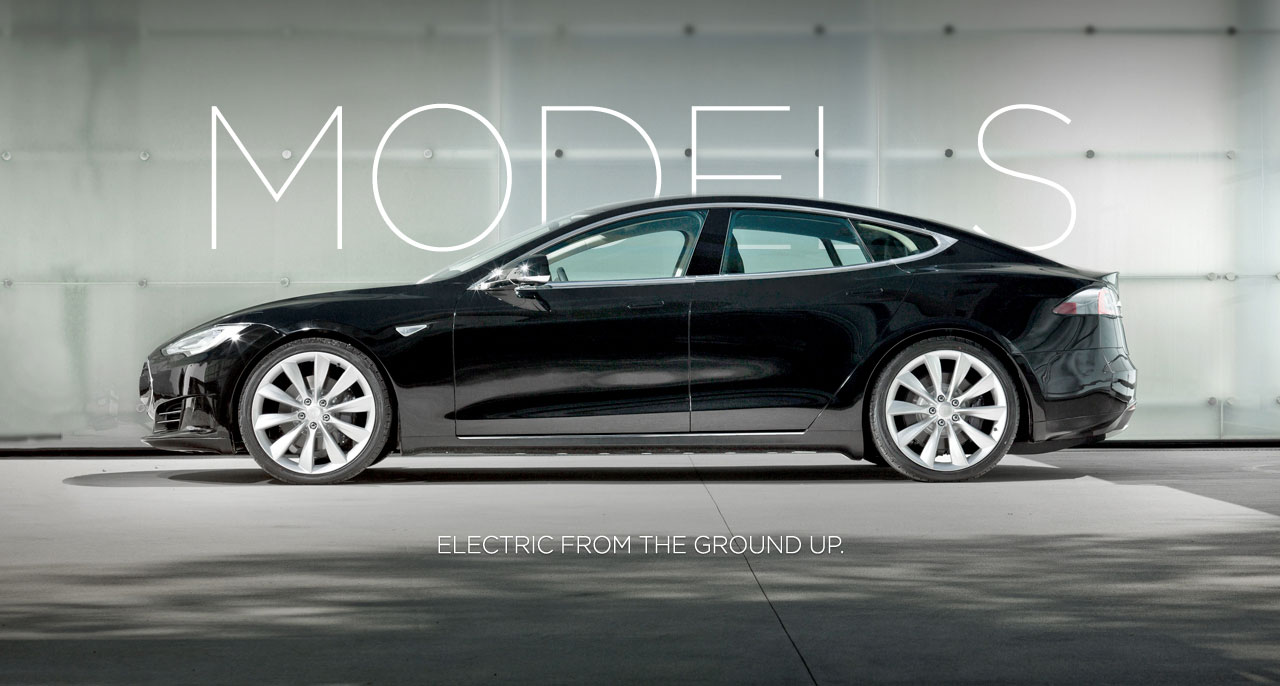
The decline in gas prices at the beginning of the 20th century allowed ICE cars to go ahead in the vehicle market. Today we see the opposite situation: the popularity of electric vehicles is growing due to a more careful attitude to the environment and rising fuel prices. If in 2003 in the USA 3.7 liters (gallon) of gasoline cost one and a half dollars, then by 2011 prices rose to three and a half dollars. In May 2015, the price was $ 2.7 per gallon. In Russia, gasoline in June 2015 increased by 10%, now the AI-95 costs about 37 rubles per liter.
In 2013, there were 900 million cars in the world, most of which have an internal combustion engine. The production of electric vehicles in the world in 2013 amounted to 240 thousand units, and it grew to 400 thousand in 2014. The International Energy Agency, as the most aggressive scenario, predicts a total fleet of electric vehicles in the world of 24 million units by 2020, which is 2.2% of the market. But new cars, the Agency believes, will be sold in the amount of 7.2 million per year - this is 8%.
In Russia, in 2013, 290 electric vehicles were sold, and officially the total number of electric vehicles at the end of 2013 was less than one thousand. In the United States at that time, there were 170,518 electric vehicles.
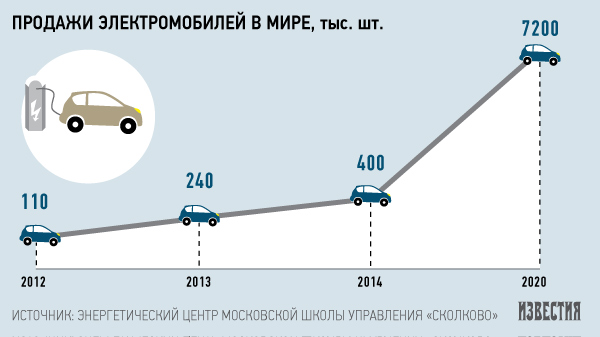

The situation is gradually changing due to increased attention to the environment since 1960-1970s and rising oil and gas prices.
Under the cut - about what happened in the electric vehicle industry in the first decade of the 21st century.
The whole series of articles:
Dawn of electric vehicles: XIX century.
Dawn and sunset of electric vehicles: the first half of the XX century.
Electric car strikes back: the second half of the XX century.
Revenge of an electric car: the beginning of the XXI century.

1997-2003
The 21st century for electric vehicles has begun poorly. In 1997, General Motors introduced the EV-1. The electric car was available in California and Arizona for leasing. A total of 1,117 electric vehicles were sold.
In 2003, all electric cars were destroyed, only two remained as museum exhibits.
On a single charge of a lead-acid battery, the EV-1 electric car could travel up to 120 kilometers, and nickel-metal hydride - up to 240 kilometers. The speed of the car was forcibly limited to 129 km / h, acceleration to 96 km / h took 9 seconds. It was possible to charge the car in 12 hours from an ordinary American standard outlet using a special device.
Fuel prices influenced Americans' reluctance to buy electric cars: in 1999, the cost of a gallon of gasoline, about 3.79 liters, was $ 1.44. In 2003, a gallon cost $ 1.75.



Cemetery of electric vehicles EV-1.

2004
Ian Wright is a co-founder of Tesla, which together with Martin Eberhard in 2003 presented Tesla to Ilona Mask and attracted an entrepreneur to the side of the company. A year after the founding of the company, Wright left because he did not believe in the commercial success of the enterprise. In 2005, Wright founded the Wrightspeed company and introduced the prototype electric car Wrightspeed X1, which did not go into series.
X1 could accelerate to 96 kilometers per hour in 2.9 seconds, the maximum speed of an electric car is 167 kilometers per hour, the range in urban conditions is 160 kilometers.
The main activity of the company is the development, manufacture of electric motors and their installation on cars - trucks, garbage trucks and other vehicles. Wrightspeed Servicesuse the postal services UPS and DHL. According to the entrepreneur, the electric motor in the truck pays off in four years.
A family car burns about 600 gallons of gas per year (2,270 liters). To buy an electric car, you will need to add 15 thousand dollars to the price of a car, and the fuel savings will be one and a half thousand dollars. Auto pays off in ten years. And the garbage truck, which consumes 14,000 gallons per year (53,000 liters), will save 35 thousand dollars on fuel and 20 thousand on maintenance. Ian Wright





2006
In July 2006, in Santa Monica, California, Tesla revealed the Roadster. The company began mass production of electric cars in 2008, but buyers received the first copies a few months later.
The Roadster accelerates to 100 km / h in 4 seconds, and its maximum speed was forcibly limited to 201.1 km / h. Engine power - 288 horsepower. The mass of the electric car is about 1140 kilograms. Mileage on a single charge is from 300 to 400 kilometers. Batteries charge in three and a half hours.
In 2014, the electric car was updated, increasing the battery capacity to 70 kW * h. Mileage on a single charge of the new version is about 644 kilometers.
The design for the Tesla Roadster was developed by the English car manufacturer Lotus Cars.
Read more about the development of Tesla in the Tesla Unknown Story series of articles .


2007
At the North American Auto Show in Detroit, General Motors introduced the Chevrolet Volt, a hybrid car, in January 2007. 45 liters of fuel and fully charged lithium-ion batteries last for 1,000 kilometers. The hybrid is charged from a network with a capacity of 110 volts for six hours and in three hours from a network of 240 volts. The maximum speed is 161 kilometers per hour.
At Volt, General Motors used EV-1 electric vehicle technology.
Serial production and sales of Volt began in 2010.





2009
Renault-Nissan showed off a five-door electric hatchback Nissan Leaf at the 2009 Tokyo Motor Show. On April 1, 2010, acceptance of orders for an electric car began, and in December of that year, sales began in the United States, and in early 2011, in Europe.
In 2010, Leaf received the title of European Car of the Year 2011 and World Car of the Year 2011.
Leaf is built on the Nissan V platform, like the Juke crossover and Micra compact car. Leaf electric motor power is 108 horsepower, and mileage from a single charge is about 160 kilometers. The mass of the lithium-ion battery is 270 kilograms; it is assembled from 192 cells. The battery contains lithium manganate on the positive electrode and graphite on the negative.
The battery is fully charged from a household electrical network of 220 volts and a current of 30 amperes in 8 hours. A special Nissan charger with a voltage of 480 volts and a current of 125 amperes charges the battery by 80% in half an hour.
Used batteries from an electric car will get a second life in household batteries, in this project Nissan competes with Tesla and Mercedes .




Renault at the 2009 Frankfurt Motor Show introduced the Renault Fluence ZE sedan ... The name stands for Zero Emission. This sedan is an electric motor version of the Renault Fluence gasoline. A lithium-ion battery with a capacity of 22 kWh allows you to drive 185 kilometers on a single charge at a speed of up to 135 kilometers per hour.
From 2011 to 2014, the company sold four thousand electric vehicles of this model.
There are three ways to charge the Renault Fluence ZE battery: in 10-12 hours from a standard outlet - 220 volts and 10 amperes, in 6-9 hours - from a street charging station with a capacity of 3 kW and a current of 16 amperes, and using “QuickDrop” - replacing the battery with a charged one at special stations.
The video shows how to replace the “QuickDrop” station. Tesla introduced such a system in the summer of 2013, opened the station in December 2014, but in June 2014, Elon Musk said that replacing the batteries in the Tesla Model S is not popular.
Renault Fluence ZE ad

Mitsubishi began selling its innovative i-Miev electric car in Japan in July 2009, and began public sales on April 1, 2010. In December 2010, i-Miev reached the European market.
I-Miev is a five-door hatchback manufactured by Mitsubishi Motors, a version of the petrol Mitsubishi i converted into an electric car. The electric version is 200 kilograms heavier than the original, its mass is 1100 kilograms. A lithium-ion battery and an electric motor with a capacity of 63 horsepower allow the electric car to accelerate to 130 kilometers per hour. The power reserve of the electric vehicle is 150 kilometers.
In various countries, electric cars are sold under the names Peugeot iOn, Citroën C-Zero, Mitsuoka Like, Subaru O2.
By December 2012, around 22,000 copies were sold worldwide. In 2013, 211 i-Miev units were sold in Russia. Now the price for this model is from 999 thousand rubles.



In March 2009, Tesla Motors introduced the Model S at the Frankfurt Motor Show, and sales began in 2012. The electric car received the highest rating when passing crash tests in Europe, and in 2013 broke the equipment for tests.
By the end of the first quarter of 2014, about 32 thousand Tesla S cars were sold. Elon Musk plans to sell 55 thousand electric cars in 2015.
The first test drive of an electric car.




The decline in gas prices at the beginning of the 20th century allowed ICE cars to go ahead in the vehicle market. Today we see the opposite situation: the popularity of electric vehicles is growing due to a more careful attitude to the environment and rising fuel prices. If in 2003 in the USA 3.7 liters (gallon) of gasoline cost one and a half dollars, then by 2011 prices rose to three and a half dollars. In May 2015, the price was $ 2.7 per gallon. In Russia, gasoline in June 2015 increased by 10%, now the AI-95 costs about 37 rubles per liter.
In 2013, there were 900 million cars in the world, most of which have an internal combustion engine. The production of electric vehicles in the world in 2013 amounted to 240 thousand units, and it grew to 400 thousand in 2014. The International Energy Agency, as the most aggressive scenario, predicts a total fleet of electric vehicles in the world of 24 million units by 2020, which is 2.2% of the market. But new cars, the Agency believes, will be sold in the amount of 7.2 million per year - this is 8%.
In Russia, in 2013, 290 electric vehicles were sold, and officially the total number of electric vehicles at the end of 2013 was less than one thousand. In the United States at that time, there were 170,518 electric vehicles.


